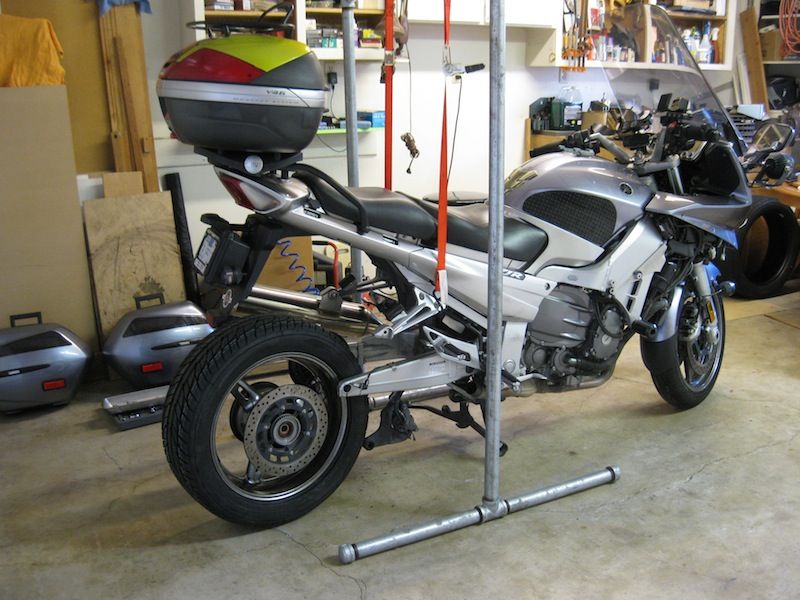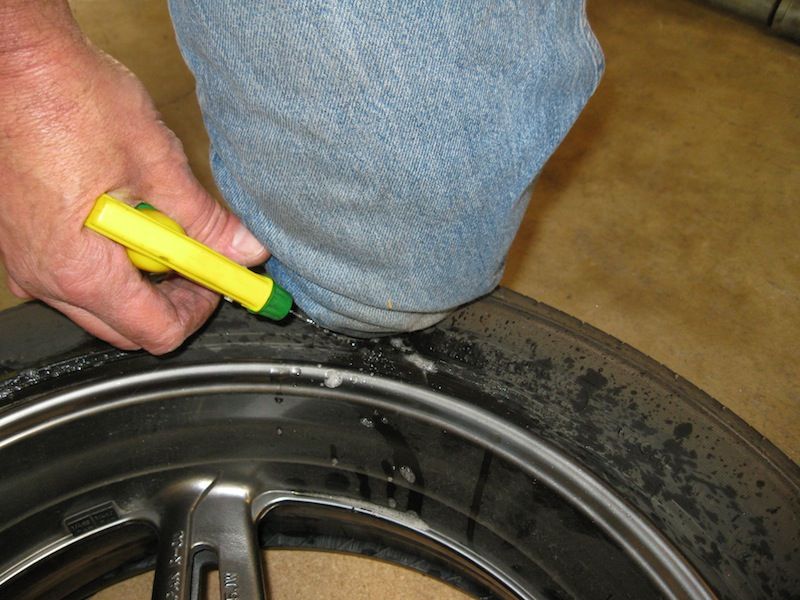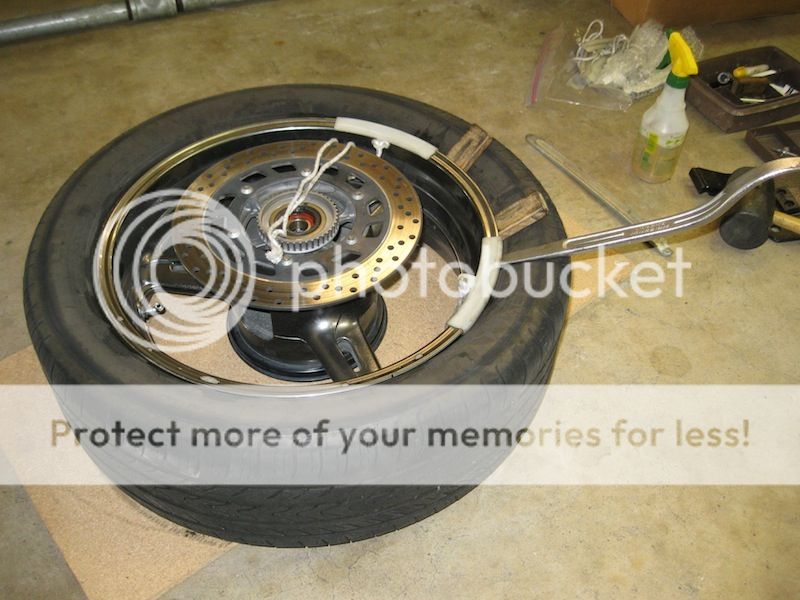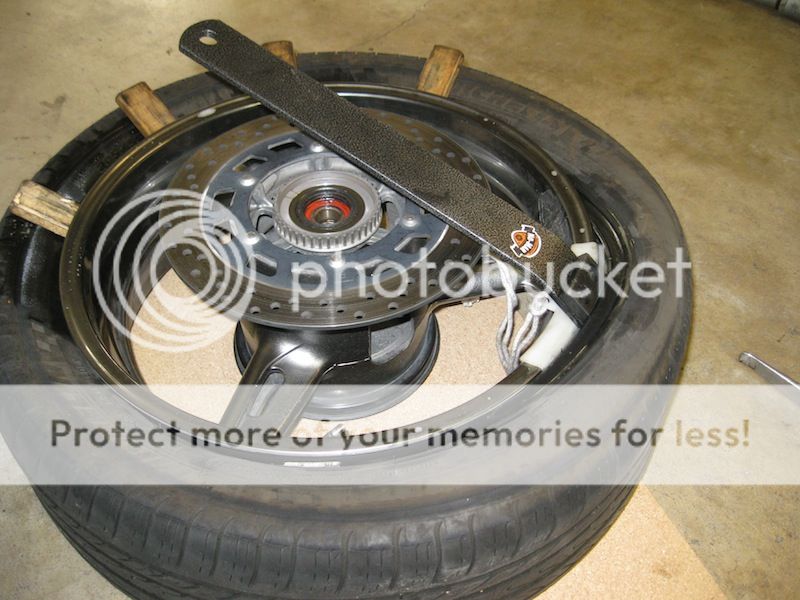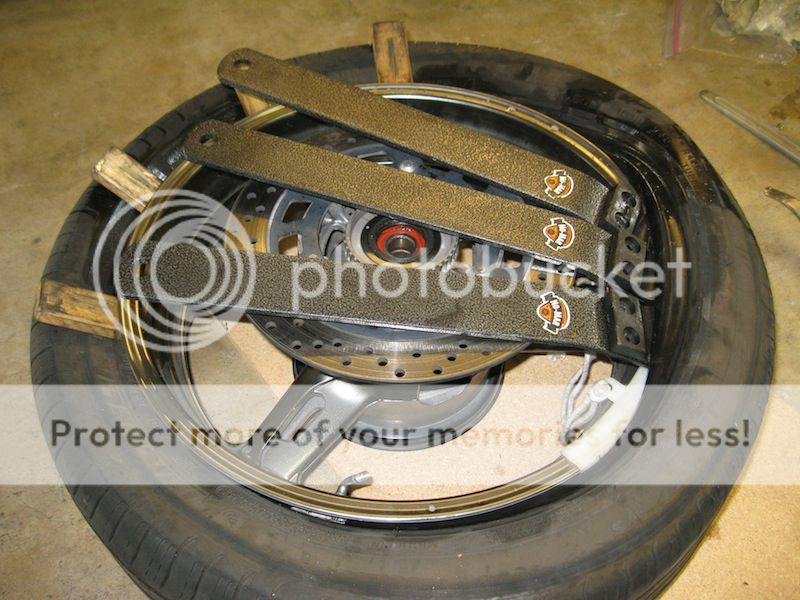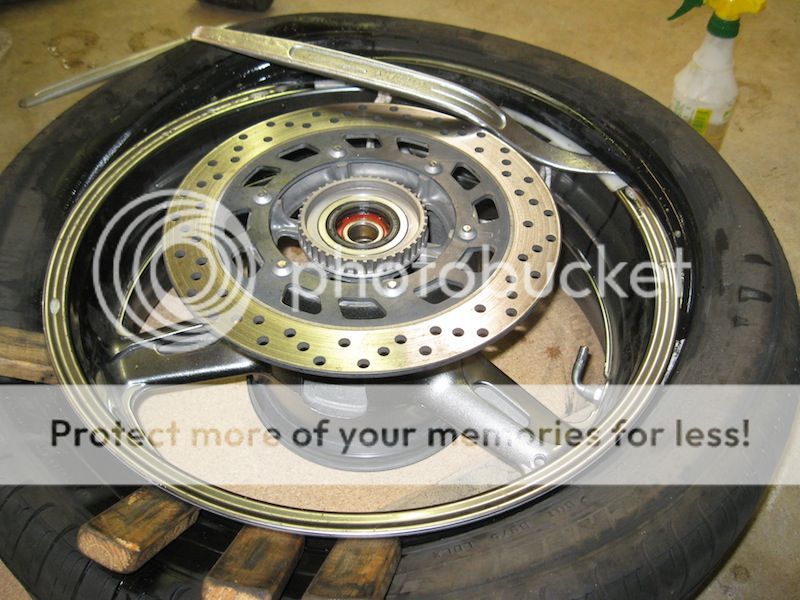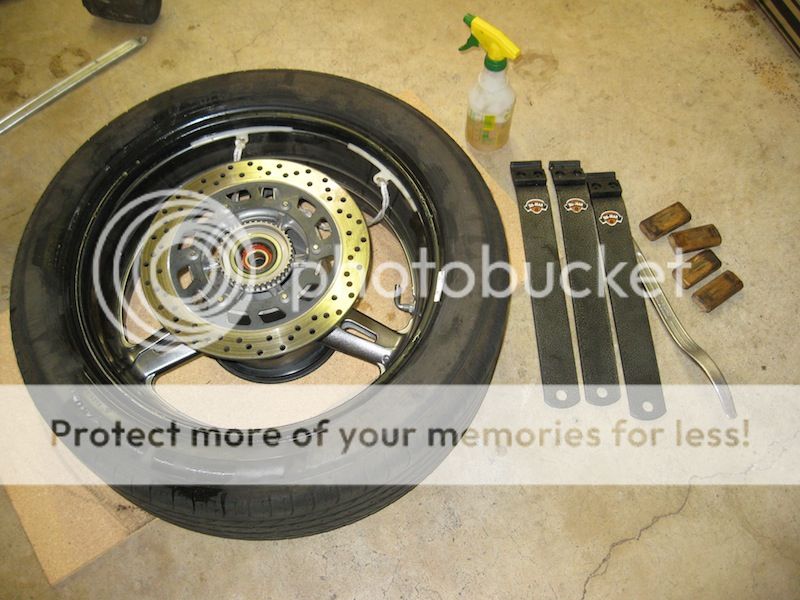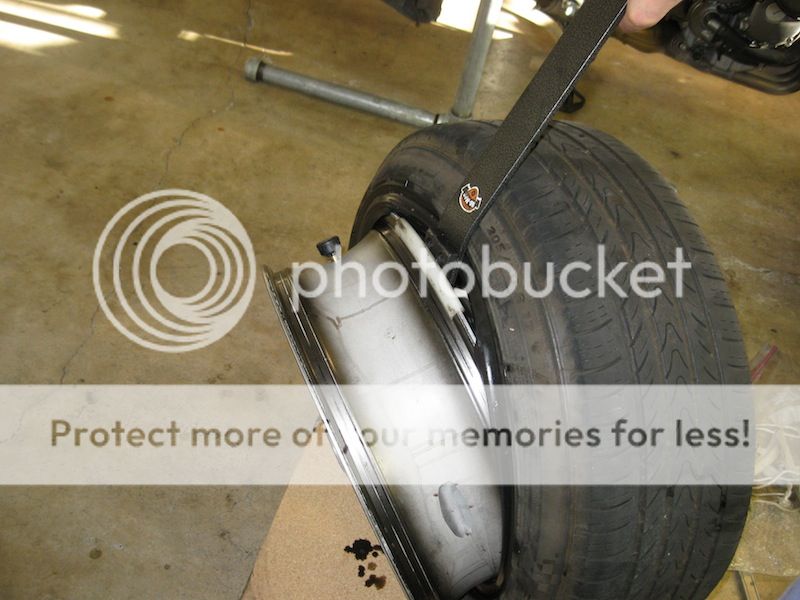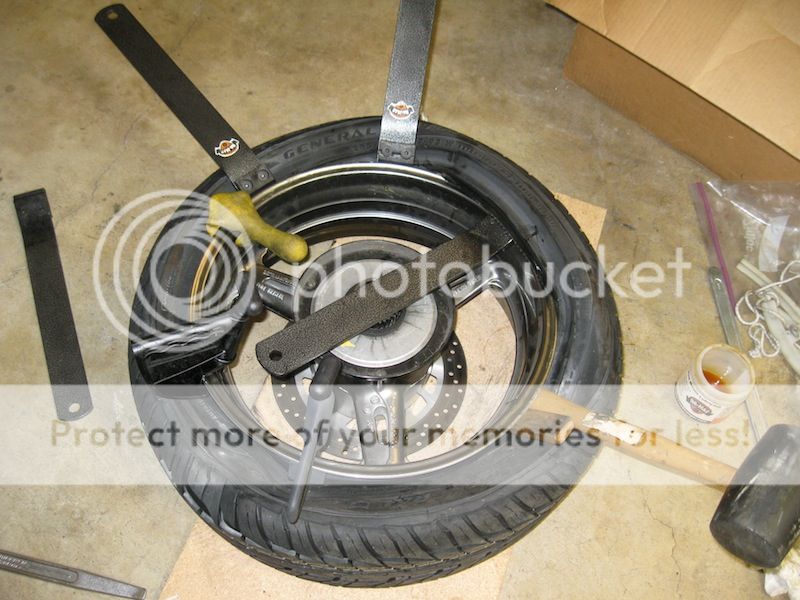This thread will be just facts and answers to frequently asked questions. As time allows I will add more data. The hope is that it will provide a useful primer for anyone interested in running a car tire on the back of their FJR w/o them needing to wade though the nearly 4000 posts, (as of 9/14), in the original thread. The original thread can be found HERE
Edit note 5/24/21 - I replaced some pictures with stock tire pics to show tread patterns. Dead links/pics deleted.
ADMIN NOTE: As this thread is added to by the author and author incorporates details into the first post, they may ask to have posts removed to keep the thread clean and organized.
NOTE - All info equally pertains to Gen I, II & III unless specifically stated otherwise.
**********Motorcycling is a dangerous sport!!! RUNNING A CAR TIRE ON YOUR MOTORCYCLE CAN HAVE INSURANCE REPERCUSSIONS. Claims in tire related accidents have been both denied and accepted. Read your policy and speak with your agent. Be aware of the potential issues and make your own decisions based on your own risks and risk assessment. If you wish to discuss this, start a new thread, don't post it here.
Why put a Car Tire, (CT), on the back of the FJR in the first place?
The prime reasons are cost and longevity. A CT will last 20-40k miles and costs $60-200 depending on your choice of tire. For riders that cover 20-30k+ a year, this results in a significant savings. For some this is the difference between riding more or riding less. It's also an option for riders doing long trips that would otherwise require a mid trip tire change, possibly in an unlikely location such as Alaska. The CT is also more resistant to punctures.
It can also be a viable option if you are stuck somewhere due to tire damage or premature wearing out and can't get a replacement motorcycle tire. This could make it possible for your trip to continue w/o waiting for a tire to be shipped to you in the middle of no where, or a place where there are no motorcycle shops to mount your tire. For this reason, some travelers make their bikes "Car Tire ready" by replacing the brake tension arm prior to their trip.
Doesn't the handling suck?
No. It's different, but not nearly as different as you might expect. The main two things you notice are heavier turn in and a different feel when crossing grooves in the pavement. There is also a tendency to track more in tire ruts. The heavier turn in is quickly gotten used to and a non-issue once muscle memory is developed. For some, this is the end of the block, others need a couple hundred miles to grow accustomed to it.
The main loss with a CT is the quick, effortless transitions that we experience on new moto tires. On moto tires this dimishes as the tires wear, with handling becoming poor at the end of the tire's tread life, (sometimes earlier). With the CT, the handling is consistent throughout the life of the tire. Once the rider is accustomed to the new feel, quick, easy transitions are natural again with no, or little, perceived additional effort. The CT actually offers smoother & easier turn in as it "wears in" to moto use. This takes around 400-1000 miles, depending on tire. Also worth noting is that front tire wear still impacts turn in feel too. A worn front tire will increase turn in effort, just as a squared off rear moto tire contributes to this effect.
Local regulations and vehicle inspections requirements should be investigated to determine the legality and potential liability before mounting and using a car tire on a motorcycle.
Uneven road surfaces, like steps as you move from that newly paved lane to the one not yet re-paved or curb edge transitions can cause the bike to sharply lean, use extra care during this type of maneuver!!
It really does have traction all the way over to peg scraping lean angles. Once the muscle memory is established and you accept that you really can lean just like you did before, there is no problem riding fast in the twisties. It is more work to toss the bike back and forth with the CT. As mentioned above, transitions from side to side require more effort. Once the muscles are built up, it doesn't seem like a big difference, but spending the day in the twisties will usually let you know that you got a work out in the shoulders.
Will I be trading traction and handling for more tire mileage?
No, you will not be giving up any traction. If you brake in, hammer out and live for the twisties, you are giving something up for more tire mileage. Not traction/control, but ease of turn in and feel, both personal things that every rider has to quantify for themselves. Tire choice, even among car tires, does make a big difference! A very general rule of thumb is that if you wear out a sport-touring tire in 4k, you're probably not a candidate for CT use. You'll miss the light turn in effort of fresh moto tires.
But the sidewalls of a CT aren't meant for riding on! Won't this be dangerous?
No. You never ride on the sidewalls of the CT. The dynamics are a little different when using a CT on the motorcycle. For much of the time the full width of the CT tread is on the ground. During low angle turns, all of the tread stays in contact with the pavement and the sidewalls flex to allow this. When turn angles exceed the ability of the sidewalls to flex, the outside tread blocks start to lift off the ground, but the tire does not roll over onto the side wall. The inside tread blocks remain in contact with the pavement. At extreme lean angles the last two tire blocks of the tread are still in contact with the pavement, even in peg dragging turns. There is another dynamic in play at steep angle turns. The rear lifts up, steepening the steering angle, which naturally quickens turn in. However, due to the squarer tread, you don't actually feel this, it's just a smooth transition w/o a peak in effort
Traction is not a limiting factor with the CT. In fact, traction is better than a moto tire in many conditions. The CT does not step out on tar snakes and resists sliding in loose conditions well past the threshold of a moto tire. The greater tread depth and number of tread blocks also helps greatly in dirt/gravel/mud/sand conditions giving a more stable and control-able ride.
Further, the loads and forces involved on the motorcycle are far less than those of a car. Less than half, even at max. load on the FJR. This means less heat, and also means slightly lower tire pressures are desirable for moto use.
Does the car tire lower or raise ride height?
Ride height is usually raised in the rear slightly due to the larger diameter of the CT. It is a relatively small amount, as far as what you notice when sitting on the bike with your feet down at a stop. This facet also accounts for the odo and speedo being closer to accurate with the CT, (the larger diameter).
Will a car tire actually fit on the FJR w/o modifications?
No. The tire fits the stock wheel just fine, but the brake caliper tension arm usually rubs, depending on the tire choice. However, it's a simple piece to replace with a flat steel or stainless steel part that allows plenty of clearance. Some riders have also slightly clearanced the center stand legs, though this is usually not necessary.
How do I make a new brake tension arm?
The stock part is a hollow aluminum tube, likely an extrusion, with lightening holes. A 3/16" thick x 3/4" wide x 9 1/2" long steel or stainless steel flat bar is more than strong enough to replace the stock part. Most well stocked hardware stores will stock this material by the foot. Simply use the stock part as a template to drill the two mounting holes and a third smaller hole for the zip tie that retains the brake line to the bar. Radius the ends to avoid sharp corners and if you use steel, paint it so it won't rust.
Finished length = 9.5" (If you want to get picky, 9 15/32") You need to radius the ends for clearance.
Center to center of the (2) .328" ,(21/64"), mounting holes = 8.563" (or 8 9/16")
Distance of the smaller .243", ('C' drill size), hole, from the END of the bar = 1.157" (or 1 5/32")
Install the new part on the outside of the solid tabs on the swing arm and brake caliper to allow for the additional clearance needed.
An online source for Stainless Type 316 flat stock in 3/6" x 3/4" is HERE Many hardware stores will carry 3/16" x3/4" flat steel stock that can easily be cut and drilled with simple tools at home. Just paint the steel so that it does not rust.
Carmine's Custom Cycle brake bar (above) - Available from FarkleMasters
NOTE - The brake arm is the same for Gen I and II.
Note: Regardless of what brake arm you make or use, compare it to the stock one before mounting it to ensure the holes line up and the length is correct. At least one rider has had an issue with a long bar not fitting and this can cause potential problems, including, but not limited to, ABS failure!
Note that some riders have modified the stock part, either cutting clearance into it, or by cutting it completely in half and using as suggested above, bolted to the outside of the solid tabs. While there have been no reported failures, I really prefer the extra strength of a steel or stainless steel part. You need to make your own judgement call on this.
If I put the Carmine's Brake bar, (or other modified bar), on the FJR, w/o mounting a car tire will there be an issue?
No, there are no negative issues with running a CT brake tension arm with a motorcycle tire. This simply makes the bike "CT ready", but in no way limits you. You can safely run either a moto tire or CT at that point with no further modifications
What size tire fits?
The best size car tire to use is 205/50-17. This size CT is the only 17" size rated for a 5.5" wide rim, (the FJR's size), and offers a wide selection of tire choices.
**Note: As of May 2019 narrower sizes of car tires are becoming available in the US. The Bridgestone Potenza 175/55-17has been run on other motorcycles with excellent results in handling and performance. Not as many tire options in this size.
Why not use a 185 or 195 sized car tire, rather than a 205? Wouldn't a smaller car tire be less expensive, easier to mount, have less rolling resistance and be closer to the original 180 tire size?
The main reasons for this are pretty strait forward. There are no 185 width tires in 17", at least beyond temp spares.** 17" tires tend to be in a performance or grand touring class. They often have squarer profiles, in part to maximize tread life, an in part to improve cornering stability with stiff side walls.
What tire pressure do you use?
This will vary by rider. Many are running 30-32 psi. with the 019 Grid. BugR ran 28 psi on pavement and 25 psi on gravel for the BFG, (which has stiffer sidewalls).
Testing with a temp gauge has shown that for the all season tires 31 psi offers an even temp rise and provides excellent long term wear. Lower pressures will offer easier transition feel, but at the cost of additional wear to the outside tread blocks. Some are running max. pressure for the tire they use, (50 psi), to maintain as much of a rounded profile as possible. (this offers a different feel, but so far appears to not impact tread life, at least at the 10-15k point. Full term wear is still unknown.) Each rider needs to determine what suits their riding style best.
What tires have already been tried?
(pics below are of tires when mounted, not always during use)
The following tires are currently being used on the FJR. Tire choice is a highly individual area. Longevity has not been fully determined at this time, but will be updated as info becomes available. Typically, I chose to look at tires with the following characteristics: Rounded edges, (this makes turn in easier), All Season classification, (summer only tires don't last as long and can sometimes change character in the wet, with poor traction resulting), symmetrical tread designs, (nice, but not a must have, though some asymmetrical tire designs have harder tread blocks on what would be the 'outside' of the tire when used on a car) and non-run flat, (run flat tires have very stiff side walls and this is not desirable for the FJR's weight, increasing turn in effort. Heavier bikes like Goldwings do benefit from Run Flat tires).
Potenza 019G Grid This tire has proven to be a consistent 40k mile tire. It requires more turn in effort than some other tires and has slightly stiffer sidewalls and a slightly more square profile than some other tires, but remains a proven choice that wears evenly.
Bridgestone Potenza 019G Grid
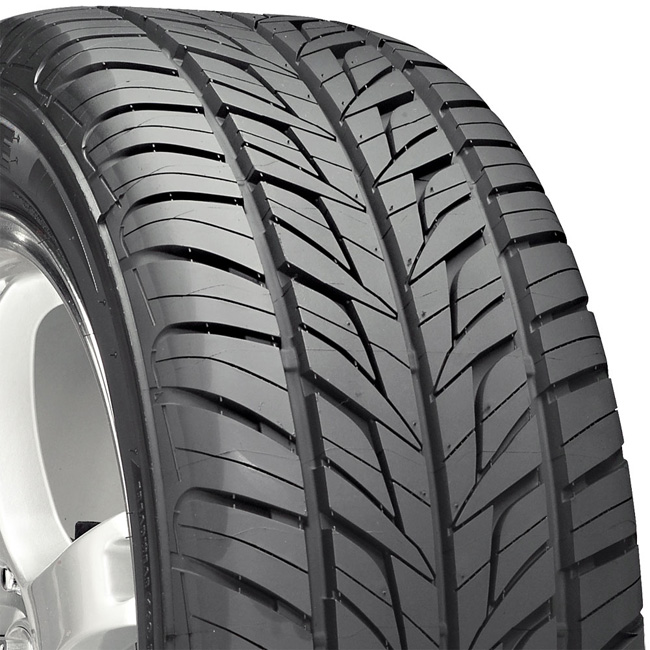
(removed at 36,600 and not quite at the wear bars. Easily a 40k tire)
Yokohama ADVAN A82A
(3/32" left to wear bars at 12k)This tire wears faster than the 019Grid. Only lasted approx. 26k miles. Handled well, turn in pressure was average.
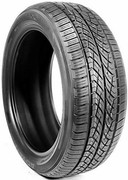
Aurora H107
(used for the '09 IBR with a PR2 - no tire changes or problems.)
May not be available in 205/50-17 at this time.
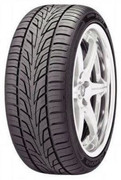
Michelin Pilot Sport A/S Plus
(This tire finally hit the wear bars at 55,000 miles! on 11/19/14. It now holds the record for longevity of a car tire on a FJR)
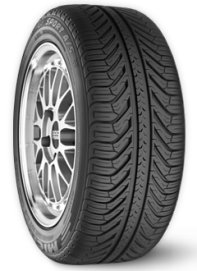
Close up of tread at 55k miles on 11/19/14 Red arrow showing wear bar at tread surface, yellow arrows showing wear bars still very slightly below tread surface.
https://i5.photobucket.com/albums/y161/radiohowie/55k_zps6514d29b.jpg
Yokahama AVS Db (South Africa) Wore out quickly. Approx. 15k miles. It is difficult to find 205/50-17 tires in RSA, limiting the potential choices for Darkside tires.
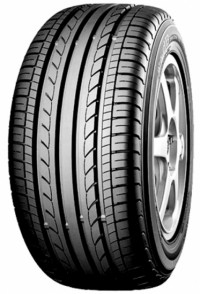
Dunlop Direzza DZ101 Good feel and handling, wears well, unknown life, but should easily be over 30k.
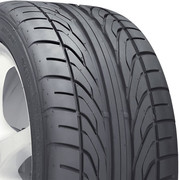
Michelin Pilot Exalto A/S (This has become one of the most favored tires for it's excellent handling) Note that this tire, as of 9/14, is no longer in production, though some left over stock can be found still. This tire was typically a 36-40k mile tire and due to the more rounded edges, handled very "bike like" with easy turn in and good overall manners.
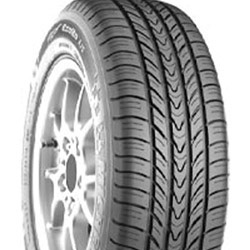
Goodrich Supersport A/S
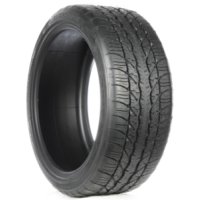
Toyo Extensa Hp (about $65)
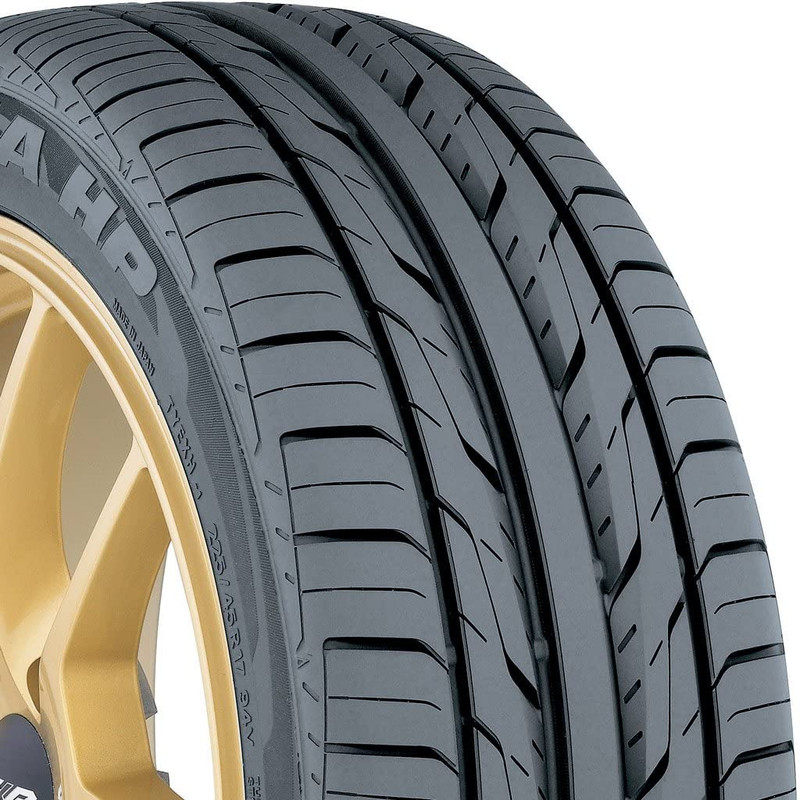
Yokohama AVID Envigor Report by another rider from 10/13/14 of reaching wear bars at 20k miles.
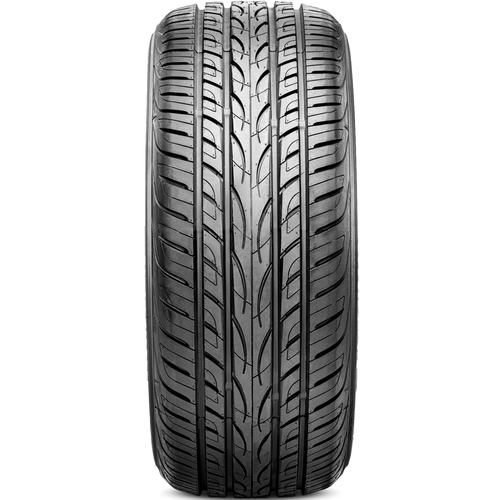
General Tire GMAX (pic by Frankko) This has become a popular tire choice as of 9/14 and handles well, wears evenly and is inexpensive as well. A proven performer. Mileage life is as yet unknown.
https://i136.photobucket.com/albums/q164/prstar01/Darkside.jpg
Another potentially good Darkside tire. Not tried yet, so report back if you try it. $76.21 as of 12/12/18
Riken RAPTOR ZR A/S - SIZE: 205/50ZR17 This is an ultra high performance all season tire with a 300AA rating. Symmetric tread design with good wet and dry reviews.
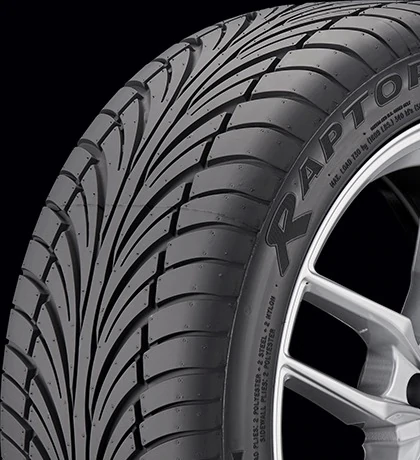 LINK
LINK
How about adding what cars use this size tire to FAQ? When I ordered my tire this evening, the online store asked for a vehicle.
They do that to suggest other items and it won't affect your ability to buy the tire you want. Enter any car, or a late model Mini Cooper if you want something that takes the 17" size wheel.
What about run flat tires?
Run Flat tires have very stiff sidewalls. This is a good thing for the 900 lb. GL1800, but not necessary for the 650 lb. FJR. Run Flat tires are also much more expensive. One of the reasons for a CT is economy. FWIW, even with zero air pressure the FJR is light enough to ride on the CT w/o collapsing it, though I would not attempt to do this at any significant speed! And inner side wall damage WILL occur if done for any significant distance.
What about shaving the outside corners of the tire to put more of a radius on them?
It has been suggested that a tire re-treader or race shop could possibly do this. It should benefit initial turn in to have this done, though I would suggest not going below 4/32" thread depth during the process. In time, the profile wears naturally, but doesn't seem to diminish the tread depth to the same degree that shaving would. If someone tries this, please let me know and your input will be added to the FAQ.
Aren't CTs different diameters?
Yes, and they vary by brand, (as do moto tires).
A few differences:
OEM FJR rear ('Stone 021) v/s (generic CT) 205/50/17 CT
Overall diameter: 24.8"(moto) v/s 25.1"(ct)
Tread depth: 7/32"(moto) v/s 10/32"(ct)
Weight: 13.7 lbs(moto) v/s 24 lbs(ct)
The FJR speedo and odo are slightly off with stock motorcycle tires. Typically reading ~3-5 mph faster than actual on the speedo. Running a 25.1" diameter CT resulted in my '04 FJR's speedo and odo being exactly correct, verified by multiple GPS testing.
How much heavier are CTs than Moto tires?
(from the Darksider thread, posted by: TravelinLite)
It seems as if you FJR Darksiders are at quite a disadvantage in the tire selection department when it comes to tire weight. From what I could find the 180/55-17 Michelin PR2 weighs between 13-13.5 lbs.
I did some checking on 205/50-17 CTs and came up with the following:
General G-Max = 21lb.
Yokohama ADVAN A82A = 23lb.
BridgestonePotenza RE92A = 23lb.
DunlopSP Sport 7000 A/S = 23lb.
Falken ZIEX-912 = 23lb.
Toyo Proxes 4 Plus = 22lb.
Does the heavier CT cause any issues?
The extra unsprung weight creates a little more work for the rear shock. If the shock is worn, it will become more obvious with the additional weight working the shock harder. Running an aftermarket shock, I have not noticed any need to rebuild any sooner than normal with the CT. The extra weight does impact Hp to a minor degree. The extra mass of the tire sucks up some power during acceleration. Riding back to back identical FJRs, with and w/o CT, makes it apparent that only a slight loss in acceleration is noticeable.
Is it a problem to get a CT mounted on the FJR rim?
This varies widely. Some moto shops will mount the CT w/o issues. (Cycle Gear seems to be ok in some locations), HD and trike oriented private shops also seem to be generally ok with it. Most car tire sellers can do it, but may not like the idea. A rim clamp tire changer is required for the job, which is common at any tire shop dealing in high end alloy wheels. Some tire changers have too large a center pilot rod for the FJR's wheel. America's Tire has been great, but can't balance the mounted tire due to their equipment. I've simply had them mount the tire for my "trike" and then had a moto shop balance it. Oddly, moto shops seem to have no issue with balancing the CT that's already mounted.

Generally, it's a good idea to take just the loose wheel into the shop. Giving them a reasonable suggestion that it's for a sidecar equipped motorcycle or trike seems to help in some cases, as that makes sense to them more than running it on a motorcycle.
It can be done on a NoMar or similar manual tire changer too. The main difficulty is getting the second bead on the wheel. The wider CT resists attempts to get the first bead to stay in the 'well' of the wheel. Using small blocks to keep the first bead up into the center valley or well of the wheel helps allow the second bead to shift and that last 1/4 to get over the rim edge. There is enough static pressure on the tire beads that it is very difficult to rotate the tire on the wheel once it's mounted. Seating the bead is a non-issue due to the deeper bead design of the CT. The stiffness of the particular tire's sidewalls has a significant impact on the difficulty of the install. Expect it to be a two man task, even on an automatic machine.
Is it more difficult to push around the garage?
No, no change that I can notice.
What about two up riding with the CT?
Works great. If anything, the additional weight of a passenger keeps even more tread on the ground. Passengers report no change in feel.
Are you sure you haven't died in a horrible, flaming explosion of plastic and aluminum yet?
Yes, I'm sure.
 Not so much as a parking lot drop in over 70k miles. And collectively, the FJR Darksiders have well over 1 million miles with no CT related accidents.
Not so much as a parking lot drop in over 70k miles. And collectively, the FJR Darksiders have well over 1 million miles with no CT related accidents.
Darksiders
OCfjr - Darksider #1 *Sold bike.
BugR - Darksider #2 (Canadian #1)
Doug555 - #3
Coastalcop - #4 *Sold bike.
Catfish - #5
Carmine - #6
Larry33319 - #7
tbwrench - #8
Ian - #9
Smokey2255 - #10 (Smokey's non forum friend #10.5)
Dangerdog - #11
Motofrank - #12
Demetri - #13
Fester - #14
RadioHowie - #15
Brodie - #16
Udjeni - #1SA
BPFowler - #17
wfooshee - #18
Meosborn - #19
Longrider - #20
Ed Grant - #21
LDRyder - #22 *Used for trip, changed back. Sold bike.
FJRONAMISSION - #23
dupontrob2000 - #24
BigD - Darksider #25
Popee - #26
HazzMatt - #27
Bustanut Joker - #28
Hammer - #29
Mattster31 - #30
fjrob1300 - #31
juniorfjr - #32
Poorbob - #33
Spook - #34
Kirrilian - #35
RaYzerman19 - #36
tripntx - #37
georgee2 - #38
alchemy - #39
doctorj - #40
Floridave -#41
Roy Epperson - #42
TriggerT - $43
garyahouse - #44
LowAndSilent - #45 *Changes back and forth.
wpbfjr - #46
RPAETZ - #47
Scott Witherow - #48
aroostook - #49
Tonyducks - #50
RossKean - #51 *Returned to Moto tire, prefers feel after trying 2 tires and 40k of DS riding. Remains Darkside ready for emergencies during trips.
SkooterG - Darksider #52 *Has multiple FJRs, extra Darkside wheels.
Patriot - #53
BullCBX - #54
pmspaul - #55
vectervp1 - #56
jasonhc73 - #57
Specter - #58
qkslver - #59
TripperMike - #60
Dougc - Darksider #61 *Original Darksider Enabler.
txvoyager - #62
Pimp Daddy Blue & Yellow - (honorary) Darksider #63
rbentnail - #64
philellis 123 - #65
Slosey - #66
Justin - #67
SFCJCA - #68
RiderX - Darksider #69
yessirrom - #70
BikerGeek99 - #71
Chuck35 - #72
bgross - #73
ABCindy - #74
FJRGuy - #75
Frankko - #76
mgilles0 - #77 ( First Gen III )
RFlagg42 - #78
Lawrence - #79
odot - #80 (Double Darksider #2)
Pterodactyl - #81
tdperry - #82
Twigg - Darksider #83
FJRay - #84
myrwon - #85
bikerbuddha - #86
DaJuice - #87
karstenp - #88
bigjohnsd #89 (sold bike to owsley)
playinatwork - #90 (First recognized Double Darksider - Running a Bridgestone BT-45 130/70/17 rear tire on the front of his FJR)
Kawman10 - #91
owsley - #92
101stpathfinder - #93
Note: Some people have tried the darkside and changed back. Bungie used the CT for an epic Alaska trip, then changed back to a moto tire. LDryder used the CT for a 49++ ride and changed back to a moto tire. Pimp Daddy Blue & Yellow had to borrow a Darkside tire/wheel and brake arm after the complete failure of his PR3 during a critical ride in order to finish the ride. Some riders choose to do this for a specific trip or rally, but still feel the handling of a moto tire is their preference and return to that afterwards. As has always been said, this isn't for everyone, it's simply a possible option and you should carefully consider your needs and preferences as well as the safety concerns and liabilities involved before choosing to try this.
Work in progress. If you have a question, ask it via PM and I'll add it to the FAQ. Thanks!
Edit note 5/24/21 - I replaced some pictures with stock tire pics to show tread patterns. Dead links/pics deleted.
ADMIN NOTE: As this thread is added to by the author and author incorporates details into the first post, they may ask to have posts removed to keep the thread clean and organized.
NOTE - All info equally pertains to Gen I, II & III unless specifically stated otherwise.
**********Motorcycling is a dangerous sport!!! RUNNING A CAR TIRE ON YOUR MOTORCYCLE CAN HAVE INSURANCE REPERCUSSIONS. Claims in tire related accidents have been both denied and accepted. Read your policy and speak with your agent. Be aware of the potential issues and make your own decisions based on your own risks and risk assessment. If you wish to discuss this, start a new thread, don't post it here.
Why put a Car Tire, (CT), on the back of the FJR in the first place?
The prime reasons are cost and longevity. A CT will last 20-40k miles and costs $60-200 depending on your choice of tire. For riders that cover 20-30k+ a year, this results in a significant savings. For some this is the difference between riding more or riding less. It's also an option for riders doing long trips that would otherwise require a mid trip tire change, possibly in an unlikely location such as Alaska. The CT is also more resistant to punctures.
It can also be a viable option if you are stuck somewhere due to tire damage or premature wearing out and can't get a replacement motorcycle tire. This could make it possible for your trip to continue w/o waiting for a tire to be shipped to you in the middle of no where, or a place where there are no motorcycle shops to mount your tire. For this reason, some travelers make their bikes "Car Tire ready" by replacing the brake tension arm prior to their trip.
Doesn't the handling suck?
No. It's different, but not nearly as different as you might expect. The main two things you notice are heavier turn in and a different feel when crossing grooves in the pavement. There is also a tendency to track more in tire ruts. The heavier turn in is quickly gotten used to and a non-issue once muscle memory is developed. For some, this is the end of the block, others need a couple hundred miles to grow accustomed to it.
The main loss with a CT is the quick, effortless transitions that we experience on new moto tires. On moto tires this dimishes as the tires wear, with handling becoming poor at the end of the tire's tread life, (sometimes earlier). With the CT, the handling is consistent throughout the life of the tire. Once the rider is accustomed to the new feel, quick, easy transitions are natural again with no, or little, perceived additional effort. The CT actually offers smoother & easier turn in as it "wears in" to moto use. This takes around 400-1000 miles, depending on tire. Also worth noting is that front tire wear still impacts turn in feel too. A worn front tire will increase turn in effort, just as a squared off rear moto tire contributes to this effect.
Local regulations and vehicle inspections requirements should be investigated to determine the legality and potential liability before mounting and using a car tire on a motorcycle.
Uneven road surfaces, like steps as you move from that newly paved lane to the one not yet re-paved or curb edge transitions can cause the bike to sharply lean, use extra care during this type of maneuver!!
I know that the capable FJR is up to the challenge, but that tar,I don't know, I don't think so..(can it really handle in the twisties??)doctorJ wrote - I have found one thing to be aware of with the car tire on the feejer. I sometimes drive up the short inclines (for wheelchair entrance) to park at some storefronts that have cycle parking. This isn't a problem if riden straight up, but when I tried this at an angle, the rear tire "wanted" to follow the degree of the angle of the incline i.e. wanted to lean me downhill. This didn't make me fall over but just got my attention. So if going up these things like I do occasionally, be ready or lean "uphill" or just go up straight.
It really does have traction all the way over to peg scraping lean angles. Once the muscle memory is established and you accept that you really can lean just like you did before, there is no problem riding fast in the twisties. It is more work to toss the bike back and forth with the CT. As mentioned above, transitions from side to side require more effort. Once the muscles are built up, it doesn't seem like a big difference, but spending the day in the twisties will usually let you know that you got a work out in the shoulders.
Will I be trading traction and handling for more tire mileage?
No, you will not be giving up any traction. If you brake in, hammer out and live for the twisties, you are giving something up for more tire mileage. Not traction/control, but ease of turn in and feel, both personal things that every rider has to quantify for themselves. Tire choice, even among car tires, does make a big difference! A very general rule of thumb is that if you wear out a sport-touring tire in 4k, you're probably not a candidate for CT use. You'll miss the light turn in effort of fresh moto tires.
But the sidewalls of a CT aren't meant for riding on! Won't this be dangerous?
No. You never ride on the sidewalls of the CT. The dynamics are a little different when using a CT on the motorcycle. For much of the time the full width of the CT tread is on the ground. During low angle turns, all of the tread stays in contact with the pavement and the sidewalls flex to allow this. When turn angles exceed the ability of the sidewalls to flex, the outside tread blocks start to lift off the ground, but the tire does not roll over onto the side wall. The inside tread blocks remain in contact with the pavement. At extreme lean angles the last two tire blocks of the tread are still in contact with the pavement, even in peg dragging turns. There is another dynamic in play at steep angle turns. The rear lifts up, steepening the steering angle, which naturally quickens turn in. However, due to the squarer tread, you don't actually feel this, it's just a smooth transition w/o a peak in effort
Traction is not a limiting factor with the CT. In fact, traction is better than a moto tire in many conditions. The CT does not step out on tar snakes and resists sliding in loose conditions well past the threshold of a moto tire. The greater tread depth and number of tread blocks also helps greatly in dirt/gravel/mud/sand conditions giving a more stable and control-able ride.
Further, the loads and forces involved on the motorcycle are far less than those of a car. Less than half, even at max. load on the FJR. This means less heat, and also means slightly lower tire pressures are desirable for moto use.
Does the car tire lower or raise ride height?
Ride height is usually raised in the rear slightly due to the larger diameter of the CT. It is a relatively small amount, as far as what you notice when sitting on the bike with your feet down at a stop. This facet also accounts for the odo and speedo being closer to accurate with the CT, (the larger diameter).
Will a car tire actually fit on the FJR w/o modifications?
No. The tire fits the stock wheel just fine, but the brake caliper tension arm usually rubs, depending on the tire choice. However, it's a simple piece to replace with a flat steel or stainless steel part that allows plenty of clearance. Some riders have also slightly clearanced the center stand legs, though this is usually not necessary.
How do I make a new brake tension arm?
The stock part is a hollow aluminum tube, likely an extrusion, with lightening holes. A 3/16" thick x 3/4" wide x 9 1/2" long steel or stainless steel flat bar is more than strong enough to replace the stock part. Most well stocked hardware stores will stock this material by the foot. Simply use the stock part as a template to drill the two mounting holes and a third smaller hole for the zip tie that retains the brake line to the bar. Radius the ends to avoid sharp corners and if you use steel, paint it so it won't rust.
Finished length = 9.5" (If you want to get picky, 9 15/32") You need to radius the ends for clearance.
Center to center of the (2) .328" ,(21/64"), mounting holes = 8.563" (or 8 9/16")
Distance of the smaller .243", ('C' drill size), hole, from the END of the bar = 1.157" (or 1 5/32")
Install the new part on the outside of the solid tabs on the swing arm and brake caliper to allow for the additional clearance needed.
An online source for Stainless Type 316 flat stock in 3/6" x 3/4" is HERE Many hardware stores will carry 3/16" x3/4" flat steel stock that can easily be cut and drilled with simple tools at home. Just paint the steel so that it does not rust.
Carmine's Custom Cycle brake bar (above) - Available from FarkleMasters
NOTE - The brake arm is the same for Gen I and II.
Note: Regardless of what brake arm you make or use, compare it to the stock one before mounting it to ensure the holes line up and the length is correct. At least one rider has had an issue with a long bar not fitting and this can cause potential problems, including, but not limited to, ABS failure!
Note that some riders have modified the stock part, either cutting clearance into it, or by cutting it completely in half and using as suggested above, bolted to the outside of the solid tabs. While there have been no reported failures, I really prefer the extra strength of a steel or stainless steel part. You need to make your own judgement call on this.
If I put the Carmine's Brake bar, (or other modified bar), on the FJR, w/o mounting a car tire will there be an issue?
No, there are no negative issues with running a CT brake tension arm with a motorcycle tire. This simply makes the bike "CT ready", but in no way limits you. You can safely run either a moto tire or CT at that point with no further modifications
What size tire fits?
The best size car tire to use is 205/50-17. This size CT is the only 17" size rated for a 5.5" wide rim, (the FJR's size), and offers a wide selection of tire choices.
**Note: As of May 2019 narrower sizes of car tires are becoming available in the US. The Bridgestone Potenza 175/55-17has been run on other motorcycles with excellent results in handling and performance. Not as many tire options in this size.
Why not use a 185 or 195 sized car tire, rather than a 205? Wouldn't a smaller car tire be less expensive, easier to mount, have less rolling resistance and be closer to the original 180 tire size?
The main reasons for this are pretty strait forward. There are no 185 width tires in 17", at least beyond temp spares.** 17" tires tend to be in a performance or grand touring class. They often have squarer profiles, in part to maximize tread life, an in part to improve cornering stability with stiff side walls.
What tire pressure do you use?
This will vary by rider. Many are running 30-32 psi. with the 019 Grid. BugR ran 28 psi on pavement and 25 psi on gravel for the BFG, (which has stiffer sidewalls).
Testing with a temp gauge has shown that for the all season tires 31 psi offers an even temp rise and provides excellent long term wear. Lower pressures will offer easier transition feel, but at the cost of additional wear to the outside tread blocks. Some are running max. pressure for the tire they use, (50 psi), to maintain as much of a rounded profile as possible. (this offers a different feel, but so far appears to not impact tread life, at least at the 10-15k point. Full term wear is still unknown.) Each rider needs to determine what suits their riding style best.
What tires have already been tried?
(pics below are of tires when mounted, not always during use)
The following tires are currently being used on the FJR. Tire choice is a highly individual area. Longevity has not been fully determined at this time, but will be updated as info becomes available. Typically, I chose to look at tires with the following characteristics: Rounded edges, (this makes turn in easier), All Season classification, (summer only tires don't last as long and can sometimes change character in the wet, with poor traction resulting), symmetrical tread designs, (nice, but not a must have, though some asymmetrical tire designs have harder tread blocks on what would be the 'outside' of the tire when used on a car) and non-run flat, (run flat tires have very stiff side walls and this is not desirable for the FJR's weight, increasing turn in effort. Heavier bikes like Goldwings do benefit from Run Flat tires).
Potenza 019G Grid This tire has proven to be a consistent 40k mile tire. It requires more turn in effort than some other tires and has slightly stiffer sidewalls and a slightly more square profile than some other tires, but remains a proven choice that wears evenly.
Bridgestone Potenza 019G Grid

(removed at 36,600 and not quite at the wear bars. Easily a 40k tire)
Yokohama ADVAN A82A
(3/32" left to wear bars at 12k)This tire wears faster than the 019Grid. Only lasted approx. 26k miles. Handled well, turn in pressure was average.

Aurora H107
(used for the '09 IBR with a PR2 - no tire changes or problems.)
May not be available in 205/50-17 at this time.

Michelin Pilot Sport A/S Plus
(This tire finally hit the wear bars at 55,000 miles! on 11/19/14. It now holds the record for longevity of a car tire on a FJR)

Close up of tread at 55k miles on 11/19/14 Red arrow showing wear bar at tread surface, yellow arrows showing wear bars still very slightly below tread surface.
https://i5.photobucket.com/albums/y161/radiohowie/55k_zps6514d29b.jpg
Yokahama AVS Db (South Africa) Wore out quickly. Approx. 15k miles. It is difficult to find 205/50-17 tires in RSA, limiting the potential choices for Darkside tires.

Dunlop Direzza DZ101 Good feel and handling, wears well, unknown life, but should easily be over 30k.

Michelin Pilot Exalto A/S (This has become one of the most favored tires for it's excellent handling) Note that this tire, as of 9/14, is no longer in production, though some left over stock can be found still. This tire was typically a 36-40k mile tire and due to the more rounded edges, handled very "bike like" with easy turn in and good overall manners.

Goodrich Supersport A/S

Toyo Extensa Hp (about $65)

Yokohama AVID Envigor Report by another rider from 10/13/14 of reaching wear bars at 20k miles.

General Tire GMAX (pic by Frankko) This has become a popular tire choice as of 9/14 and handles well, wears evenly and is inexpensive as well. A proven performer. Mileage life is as yet unknown.
https://i136.photobucket.com/albums/q164/prstar01/Darkside.jpg
Another potentially good Darkside tire. Not tried yet, so report back if you try it. $76.21 as of 12/12/18
Riken RAPTOR ZR A/S - SIZE: 205/50ZR17 This is an ultra high performance all season tire with a 300AA rating. Symmetric tread design with good wet and dry reviews.

How about adding what cars use this size tire to FAQ? When I ordered my tire this evening, the online store asked for a vehicle.
They do that to suggest other items and it won't affect your ability to buy the tire you want. Enter any car, or a late model Mini Cooper if you want something that takes the 17" size wheel.
What about run flat tires?
Run Flat tires have very stiff sidewalls. This is a good thing for the 900 lb. GL1800, but not necessary for the 650 lb. FJR. Run Flat tires are also much more expensive. One of the reasons for a CT is economy. FWIW, even with zero air pressure the FJR is light enough to ride on the CT w/o collapsing it, though I would not attempt to do this at any significant speed! And inner side wall damage WILL occur if done for any significant distance.
What about shaving the outside corners of the tire to put more of a radius on them?
It has been suggested that a tire re-treader or race shop could possibly do this. It should benefit initial turn in to have this done, though I would suggest not going below 4/32" thread depth during the process. In time, the profile wears naturally, but doesn't seem to diminish the tread depth to the same degree that shaving would. If someone tries this, please let me know and your input will be added to the FAQ.
Aren't CTs different diameters?
Yes, and they vary by brand, (as do moto tires).
A few differences:
OEM FJR rear ('Stone 021) v/s (generic CT) 205/50/17 CT
Overall diameter: 24.8"(moto) v/s 25.1"(ct)
Tread depth: 7/32"(moto) v/s 10/32"(ct)
Weight: 13.7 lbs(moto) v/s 24 lbs(ct)
The FJR speedo and odo are slightly off with stock motorcycle tires. Typically reading ~3-5 mph faster than actual on the speedo. Running a 25.1" diameter CT resulted in my '04 FJR's speedo and odo being exactly correct, verified by multiple GPS testing.
How much heavier are CTs than Moto tires?
(from the Darksider thread, posted by: TravelinLite)
It seems as if you FJR Darksiders are at quite a disadvantage in the tire selection department when it comes to tire weight. From what I could find the 180/55-17 Michelin PR2 weighs between 13-13.5 lbs.
I did some checking on 205/50-17 CTs and came up with the following:
General G-Max = 21lb.
Yokohama ADVAN A82A = 23lb.
BridgestonePotenza RE92A = 23lb.
DunlopSP Sport 7000 A/S = 23lb.
Falken ZIEX-912 = 23lb.
Toyo Proxes 4 Plus = 22lb.
Does the heavier CT cause any issues?
The extra unsprung weight creates a little more work for the rear shock. If the shock is worn, it will become more obvious with the additional weight working the shock harder. Running an aftermarket shock, I have not noticed any need to rebuild any sooner than normal with the CT. The extra weight does impact Hp to a minor degree. The extra mass of the tire sucks up some power during acceleration. Riding back to back identical FJRs, with and w/o CT, makes it apparent that only a slight loss in acceleration is noticeable.
Is it a problem to get a CT mounted on the FJR rim?
This varies widely. Some moto shops will mount the CT w/o issues. (Cycle Gear seems to be ok in some locations), HD and trike oriented private shops also seem to be generally ok with it. Most car tire sellers can do it, but may not like the idea. A rim clamp tire changer is required for the job, which is common at any tire shop dealing in high end alloy wheels. Some tire changers have too large a center pilot rod for the FJR's wheel. America's Tire has been great, but can't balance the mounted tire due to their equipment. I've simply had them mount the tire for my "trike" and then had a moto shop balance it. Oddly, moto shops seem to have no issue with balancing the CT that's already mounted.
Generally, it's a good idea to take just the loose wheel into the shop. Giving them a reasonable suggestion that it's for a sidecar equipped motorcycle or trike seems to help in some cases, as that makes sense to them more than running it on a motorcycle.
It can be done on a NoMar or similar manual tire changer too. The main difficulty is getting the second bead on the wheel. The wider CT resists attempts to get the first bead to stay in the 'well' of the wheel. Using small blocks to keep the first bead up into the center valley or well of the wheel helps allow the second bead to shift and that last 1/4 to get over the rim edge. There is enough static pressure on the tire beads that it is very difficult to rotate the tire on the wheel once it's mounted. Seating the bead is a non-issue due to the deeper bead design of the CT. The stiffness of the particular tire's sidewalls has a significant impact on the difficulty of the install. Expect it to be a two man task, even on an automatic machine.
Is it more difficult to push around the garage?
No, no change that I can notice.
What about two up riding with the CT?
Works great. If anything, the additional weight of a passenger keeps even more tread on the ground. Passengers report no change in feel.
Are you sure you haven't died in a horrible, flaming explosion of plastic and aluminum yet?
Yes, I'm sure.
Darksiders
BugR - Darksider #2 (Canadian #1)
Doug555 - #3
Catfish - #5
Carmine - #6
Larry33319 - #7
tbwrench - #8
Ian - #9
Smokey2255 - #10 (Smokey's non forum friend #10.5)
Dangerdog - #11
Motofrank - #12
Demetri - #13
Fester - #14
RadioHowie - #15
Brodie - #16
Udjeni - #1SA
BPFowler - #17
wfooshee - #18
Meosborn - #19
Longrider - #20
Ed Grant - #21
FJRONAMISSION - #23
dupontrob2000 - #24
BigD - Darksider #25
Popee - #26
HazzMatt - #27
Bustanut Joker - #28
Hammer - #29
Mattster31 - #30
fjrob1300 - #31
juniorfjr - #32
Poorbob - #33
Spook - #34
Kirrilian - #35
RaYzerman19 - #36
tripntx - #37
georgee2 - #38
alchemy - #39
doctorj - #40
Floridave -#41
Roy Epperson - #42
TriggerT - $43
garyahouse - #44
LowAndSilent - #45 *Changes back and forth.
wpbfjr - #46
RPAETZ - #47
Scott Witherow - #48
aroostook - #49
Tonyducks - #50
SkooterG - Darksider #52 *Has multiple FJRs, extra Darkside wheels.
Patriot - #53
BullCBX - #54
pmspaul - #55
vectervp1 - #56
jasonhc73 - #57
Specter - #58
qkslver - #59
TripperMike - #60
Dougc - Darksider #61 *Original Darksider Enabler.
txvoyager - #62
rbentnail - #64
philellis 123 - #65
Slosey - #66
Justin - #67
SFCJCA - #68
RiderX - Darksider #69
yessirrom - #70
BikerGeek99 - #71
Chuck35 - #72
bgross - #73
ABCindy - #74
FJRGuy - #75
Frankko - #76
mgilles0 - #77 ( First Gen III )
RFlagg42 - #78
Lawrence - #79
odot - #80 (Double Darksider #2)
Pterodactyl - #81
tdperry - #82
Twigg - Darksider #83
FJRay - #84
myrwon - #85
bikerbuddha - #86
DaJuice - #87
karstenp - #88
bigjohnsd #89 (sold bike to owsley)
playinatwork - #90 (First recognized Double Darksider - Running a Bridgestone BT-45 130/70/17 rear tire on the front of his FJR)
Kawman10 - #91
owsley - #92
101stpathfinder - #93
Note: Some people have tried the darkside and changed back. Bungie used the CT for an epic Alaska trip, then changed back to a moto tire. LDryder used the CT for a 49++ ride and changed back to a moto tire. Pimp Daddy Blue & Yellow had to borrow a Darkside tire/wheel and brake arm after the complete failure of his PR3 during a critical ride in order to finish the ride. Some riders choose to do this for a specific trip or rally, but still feel the handling of a moto tire is their preference and return to that afterwards. As has always been said, this isn't for everyone, it's simply a possible option and you should carefully consider your needs and preferences as well as the safety concerns and liabilities involved before choosing to try this.
Work in progress. If you have a question, ask it via PM and I'll add it to the FAQ. Thanks!
Last edited by a moderator:




